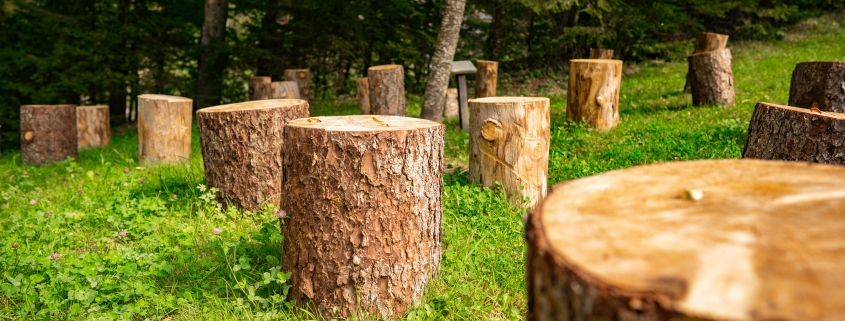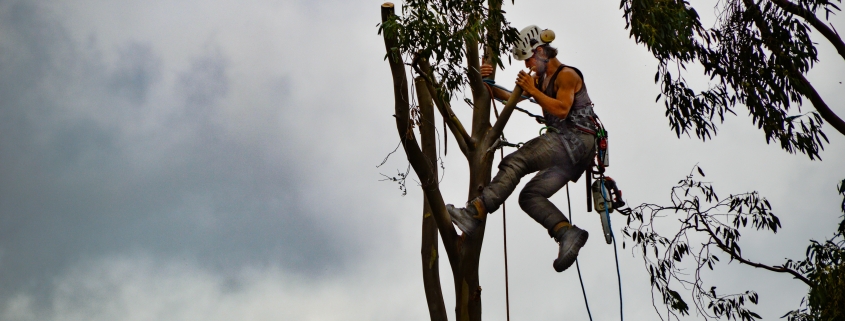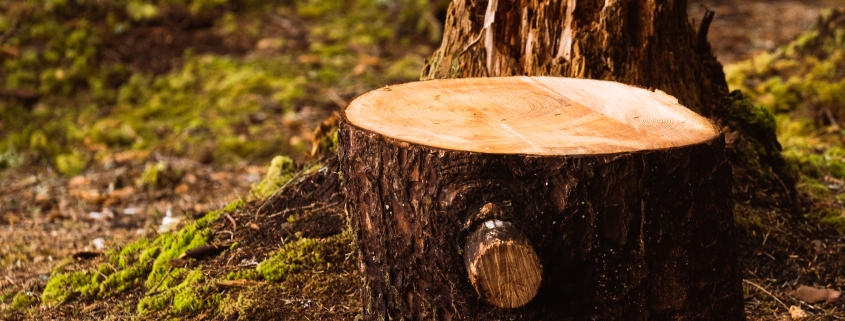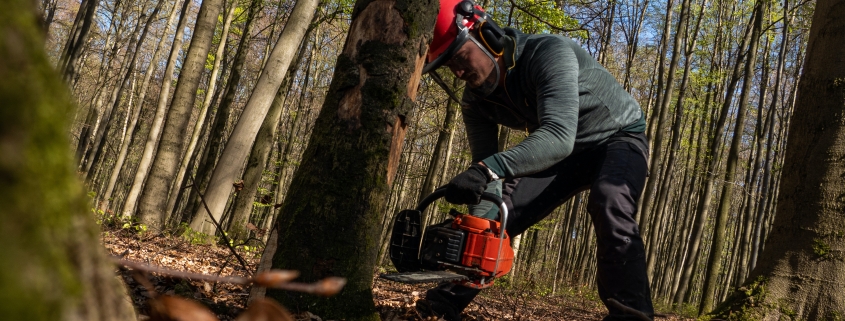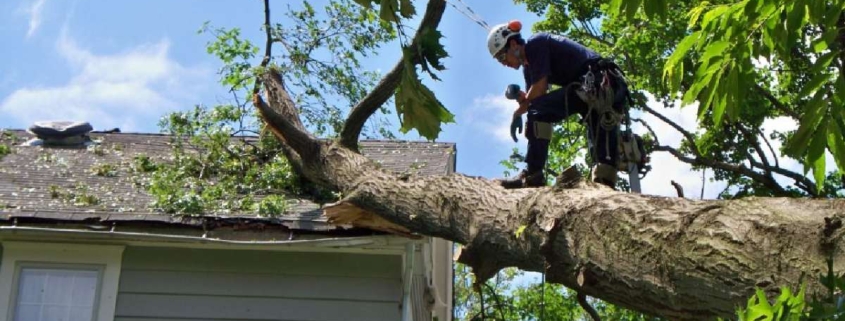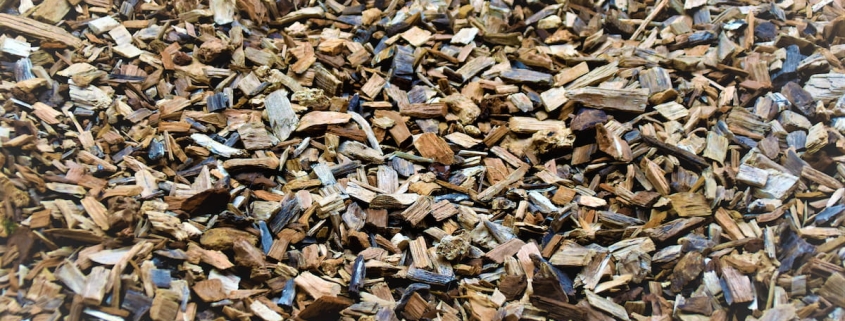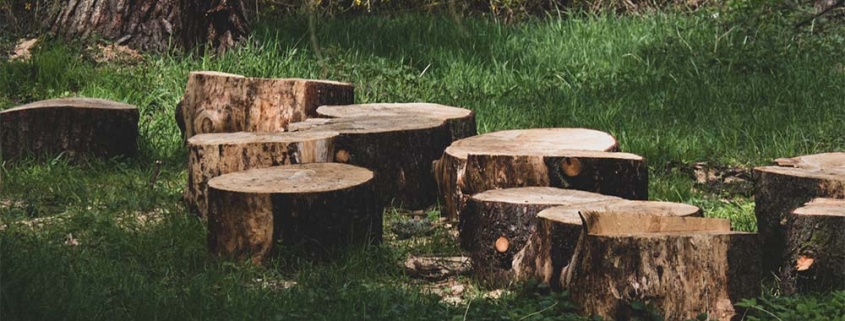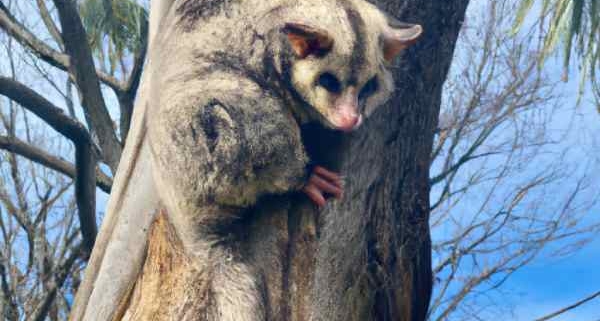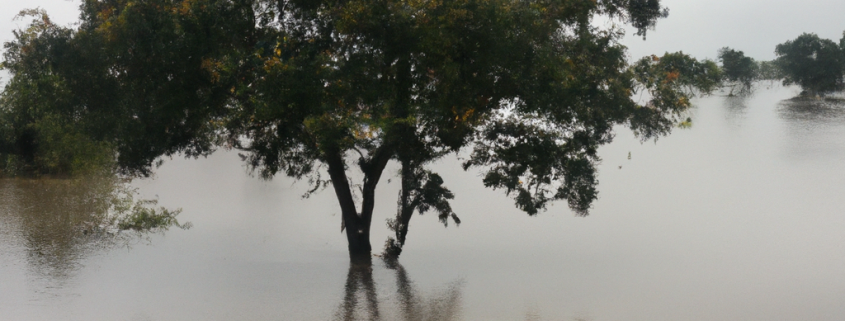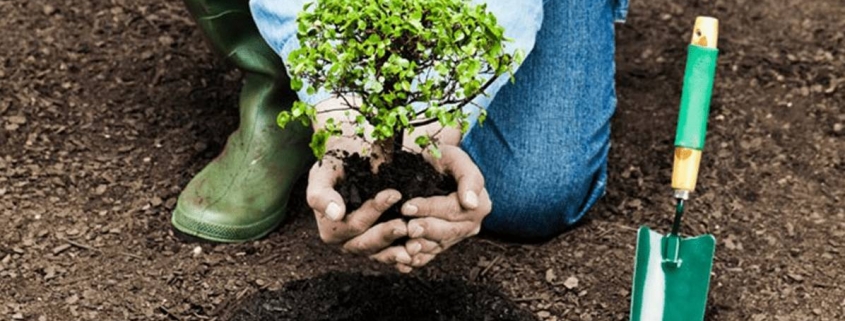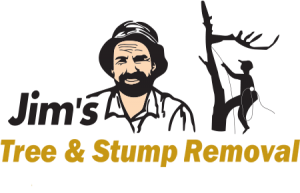Trees are undoubtedly one of nature’s most valuable assets. However, there are times when these revered giants turn into liabilities. In such situations, many homeowners consider DIY tree removal, which is a grave mistake. Not only is it dangerous, but it can also lead to severe personal injuries and property damage.
Understanding the risks involved in DIY tree removal is paramount before taking on such a task. To help you make an informed decision, this article will highlight the dangers and benefits of professional tree removal services. By the end of this article, you’ll never want to touch a chainsaw or rope again!
The Dangers of DIY Tree Removal
When it comes to tree removal, it’s essential to prioritise safety and leave the task to the professionals. Hiring a reputable tree removal service can not only prevent personal injury but also avoid damage to property and ensure proper disposal of the tree. This is especially important when dealing with large trees or those located in difficult-to-reach areas.
There are also legal and financial considerations to keep in mind; Homeowners may be held liable for any damage caused to nearby property or individuals, and improperly removing a tree could result in fines or legal action.
Removing a tree on your own may not always be the most cost-effective solution, as it requires purchasing or renting specialised equipment and may result in further damage that requires additional repairs or renovations. Professional tree removal services often have the expertise and equipment necessary to remove a tree safely and efficiently, without causing additional damage or incurring unnecessary expenses.
If you’re planning to remove a tree, it’s important to consider the risks and benefits of DIY versus professional services. By prioritising safety and seeking the assistance of experienced professionals, you can ensure that your property is well-maintained and safe for years to come.
Benefits of Hiring Professional Tree Removal Services
If you have trees on your property, it is essential to keep them healthy and well-maintained through regular trimming and pruning. However, there may come a time when a tree needs to be removed due to disease, age, or structural damage. In such cases, it’s important to hire a professional to avoid potential hazards and ensure that the job is done correctly.
Professional tree removal services can handle both major and minor tree removals, including large trees that require advanced techniques and equipment. They can also assist with stump grinding to remove the remaining part of the tree after removal, leaving your property free of obstructions.
Professional tree arborist services provide planting and regular maintenance to keep your trees healthy and safe. An arborist will advise you on the best tree species to plant and make sure they are planted correctly. Regular maintenance services include pruning to remove dead, diseased, and weak branches and inspection for signs of disease or pest infestation.
Hiring a professional tree removal service offers many benefits, including safety, efficiency, and expertise in handling all types of tree removal and related services. Whether you need to remove a tree or install a new feature in your outdoor space, hiring an arborist or tree removal service ensures that the job is done right the first time.
How to Choose the Right Tree Removal Service
Tree removal can be a dangerous and complex process, which is why it’s important to choose the right tree removal service. Here are several tips to guide you in your decision-making process:
Check for Certification and Insurance
Make sure that the company is certified and fully insured. Certified arborists have the necessary training and expertise to safely remove trees without causing damage to surrounding property. Insurance coverage ensures that you are not liable for any accidents or damages that may occur during the tree removal process.
Look for Experience and Expertise
When selecting a tree removal service, opt for one with a strong reputation and a history of successful tree removal projects. Knowledge and skill are critical factors in ensuring the safety and efficiency of the tree removal process.
You want to feel confident that the professionals you hire are experienced and capable of performing the task flawlessly. Whether you need a tree removed for aesthetic reasons or due to hazardous conditions, you deserve a company that can handle the job competently and with finesse.
Equipment and Techniques
It is important that tree removal services utilise modern equipment and techniques to guarantee the safe and efficient completion of the task. It’s recommended to inquire about the types of equipment they employ as well as their safety protocols.
Reviews and Recommendations
Research the tree removal service provider online and look for reviews from previous customers. Also, ask friends and family members for recommendations. Positive reviews and recommendations from satisfied customers are a good sign that the tree removal service provider is reliable and trustworthy.
Range of Services
Select a tree removal company that can provide a comprehensive spectrum of services. You need peace of mind knowing that the health and safety of your trees are in capable hands, so it’s essential to choose a supplier with extensive expertise and experience in handling the full range of tree-related issues.
Choose the right service provider to ensure the safety and efficiency of the process. Jim’s Trees is a professional and reputable tree removal company that ticks all the boxes in terms of certification, experience, equipment and techniques, reviews and recommendations, and range of services. Their team of qualified tree arborists has the knowledge and expertise to safely and efficiently remove trees of all sizes and types.
Common Mistakes to avoid and How to Stay Safe
It’s essential to rely on professionals in the field, when it comes to tree removal. However, if you opt to do it yourself, there are common mistakes to avoid and safety tips to consider. For instance, tree felling or lopping requires a good assessment of the tree’s size and weight to prevent injury or property damage.
You should also use appropriate tools, such as chainsaws, axes, and ropes, to make the job easier and safer. Proper attire, including gloves, eye and ear protection, and a hard hat, should be worn to avoid accidents.
It’s crucial to keep your surroundings in mind and ensure no power lines or obstacles are in the way. Attempting to remove a tree in bad weather can also be hazardous, and you should avoid doing so.
It is advisable to hire a professional tree removalist if you lack expertise in tree removal. A professional tree removal company possesses the necessary experience, tools, and know-how to carry out the task safely and efficiently. Avoid endangering yourself and those in your vicinity by attempting to remove a tree on your own.
If you have a tree stump on your property in Melbourne, chances are you’ll want to have it removed sooner or later. Stumps can be unsightly, take up valuable space, and even pose a safety hazard if left unattended. But what should you expect from the stump removal process, and how can you prepare for it?
Let’s take a closer look at stump removal in Melbourne, including what it involves, how to get ready for it, and what you can expect during and after the process.
What is Tree Stump Removal?
Before we dive into the specifics of stump removal in Melbourne, let’s start with a quick overview of what this term actually means. Stump removal refers to the process of completely removing a tree stump from the ground, roots and all. This is typically done using a stump grinder, which grinds the stump into small pieces that can be easily removed. In some cases, tree stump poisoning may be used as an alternative method, but this can take longer and may not be as effective.
Stump removal is an important service for a few reasons. First, stumps can be unsightly and take up valuable space on your property. Second, they can pose a safety hazard if someone trips over them or if they obstruct the view of drivers. Finally, stumps can attract insects and other pests, which can lead to problems for your other plants and trees.
How Does Stump Removal Compare to Other Tree Services?
Note that stump removal is different from other tree-related services such as tree felling, tree removal, or canopy lifting. All of these services involve removing part of a tree, but stump removal focuses specifically on removing stumps from the ground. If you have trees that need to be completely felled, you will need to hire a tree felling service.
If only the top of the tree needs to be removed, consider felling the tree or lifting the crown. Depending on your needs, they may be able to bundle these services at a discounted price. We always recommend checking with your service provider to see what options are available.
How to Prepare for Stump Removal?
If you’ve decided to have a stump removed from your property in Melbourne, there are a few steps you can take to prepare for the service. Here are some tips to keep in mind:
- Before the stump removalists arrive, make sure you’ve communicated clearly with them about what you expect from the service. This includes where you want the stump to be removed from, any potential obstacles they may need to navigate around, and how much you’re willing to pay for the service.
- Before you call in the professionals to remove a tree stump from your yard, there are a few things you can do to make their job quicker and easier. First and foremost, make sure to clear out any rocks, debris, or other obstructions from the area around the stump.
This will not only ensure optimal working conditions for the service providers, but it’ll also help to prevent any potential damage to nearby structures and equipment. So, roll up your sleeves and pitch in a little elbow grease to help expedite the process! - If there are any structures or plants near the stump that you want to protect, consider wrapping them up with a tarp or other protective material. This will not only safeguard your precious possessions from flying debris and dust, but also help avoid any possible harm caused by heavy machinery and tools during the removal process.
- Make sure the service provider has access to the site, either by clearing a path or providing them with a key or code to access the property. If the stump is located in a gated community or private area, make sure to arrange for access ahead of time.
What to Expect During Stump Removal?
During stump removal, the service provider follows a set process to safely and efficiently remove the stump. The process begins by inspecting the site to determine the best course of action for removing the stump. Different tools may be required depending on the size and position of the residual limb.
After the inspection is finished, the service provider will use a stump grinder to start sanding the stump. The size of the stump and the intended outcome determine the depth of grinding. After sanding, the service provider cleans up any remaining residue and removes it from the site.
The last step is to conduct a site inspection to confirm that all tree stumps have been removed. Depending on the size and complexity of the stump removal, this can take from a few hours to a full day. However, once this process is complete, your estate will be stump-free, safer, and more attractive.
Stump Removal Cost in Melbourne
Melbourne stump removal costs vary depending on a number of factors, including the size of the stump, the location of the site, and the complexity of the removal process. We recommend getting quotes from multiple stump removal companies before calling a service provider. This gives you a good overview of average costs in your area and allows you to compare rates and services.
Stump removal is an important service for homeowners and property owners in Melbourne who want to keep their properties safe and attractive. By understanding what the process involves and how to prepare for it, you can ensure a smooth and successful stump removal experience.
Remember to communicate clearly with the service provider, clear the area around the stump, protect nearby structures and plants, and ensure access to the site. With these tips in mind, you can get rid of that pesky tree stump and enjoy a beautiful, stump-free property.
Stump Removal Methods in Melbourne
There are a few different methods for removing a tree stump in Melbourne, including stump grinding, and chemical stump removal. Here’s a closer look at each method:
Stump Grinding
The primary approach for eliminating tree stumps in Melbourne is by using a stump grinder, which is a sizable equipment that grinds the stumps into smaller fragments. The leftover wood chips can either be utilized as mulch or cleared from the area.
A stump grinder is usually the fastest and cheapest method of stump removal. However, replanting in the same spot may not be the best option. Leftover wood chips can also attract termites and other pests.
Stump Removal
The tree stump and its roots must be manually dug out using this method. This technique is often perform on tiny stumps, can be labor- and time-intensive. A stump grinder is less expensive than stump removal.
Chemical Stump Removal
With this technique, chemicals are used to gradually decompose the stump. Although it is less common in Melbourne than stump removal or grinding, it is nevertheless a viable choice if you want to avoid using heavy machinery or manual labor.
Chemical stump removal, however, can be time-consuming and potentially dangerous for the environment. It’s crucial to carefully read the directions and dispose of the chemicals correctly.
Stump removal is an essential service for Melbourne homeowners and property owners who want to keep their property safe and attractive. Understanding the different moving methods, choosing the right service provider, and preparing for the moving process can help you get the job done safely, efficiently, and with minimal impact on your property.
At the end of the day, stump removal is a job best left to the professionals. While DIY stump removal may seem like a good idea, it can be dangerous and cause more harm than good. A professional stump removal service provider will have the experience, equipment, and tools necessary to get the job done right, without causing damage to your property or putting anyone at risk.
If you’re in need of stump removal services in Melbourne, do your research, compare quotes, and choose a service provider with the right experience, licensing, and insurance. With the right preparation and a qualified service provider, you can have your stump removed quickly and easily, and enjoy a safer, more attractive property as a result.
Trees are a great way to elevate the aesthetic and overall value of your property. However, after a bad storm, contracting disease or dying, your trees can quickly become hazardous and pose a risk to your property and other people.
We at Jim’s Trees are experts when it comes to handling hazardous trees and know when a tree should be removed and how to do it. We explain when you should be aware that your tree is dangerous and how to best get it removed.
When is a tree considered dangerous?
A tree is usually considered dangerous or a hazard once it has died, unhealthy, or has signs of decay. Common signs that your tree is dangerous include broken or dead branches, deep cracks or splitting of bark, and decaying areas on the trunk, roots or canopy. A tree may also be deemed hazardous if it is too tall, leaning to one side, or has disruptive roots. If you think your tree is at risk of becoming hazardous, you should have a professional arborist report done. Otherwise, you may run the risk of removing a protected tree or a perfectly healthy tree.
Which mulch you use on your trees will depend upon your tree’s needs. If you are wanting to prevent pests or weeds thriving in your soil and improve the aesthetics of your landscape, it’s best to use inorganic mulch. However, if you are wanting to retain moisture, add vital nutrients to the soil and aid in growth, it’s best to use organic mulch. This mulch also has the benefit of breaking down into the soil over time.
Why do you need to remove a tree?
Aside from improving the aesthetics of your property, removing a dangerous tree is important for safety reasons. A dying or dead tree can fall easily which can result in damaging property, vehicles, powerlines or even run the risk of causing a fatal accident. Fallen branches may also fall quickly and unexpectedly, which can also create road and footpath obstructions as well as unwanted damage to your property.
You may also find that failing to remove a dangerous tree can create additional problems with your existing tree and garden as a dead tree can easily spread disease, divert important water resources and nutrients from other plants, and attract pests.
Hazardous roots can also cause a range of problems, from disrupting essential underground pipes to cracking the foundations of your home. Removing these after the damage has occurred can be costly and difficult, so it’s recommended that you tackle this problem as soon as possible. If your tree is growing too close to your neighbour’s property, you could potentially be liable for any damages to their property caused by your tree. It can also create tension with disgruntled neighbours which is always best avoided.
When should you remove a tree?
As mentioned earlier in the article, before you decide to remove a dangerous tree you need to receive an assessment from a professional arborist. Some trees may only require pruning services to remove the hazardous or dead branches, and continue growing. However, others may need the full tree and stump removal to ensure the safety of your property. Ideally, you should remove a tree as soon as it is considered dangerous or a potential hazard.
Should you remove a dangerous tree yourself?
If you have a dangerous tree on your property, you may consider getting out the chainsaw and taking a crack at removing the tree yourself. Before you decide to remove the tree, it’s important to be aware of the dangers of D-I-Y tree removal. Not only do you run the risk of doing a bad job, you can potentially damage your property or injure yourself. Dying or dead trees can be unpredictable and unstable so attempting to remove the tree without the right training and equipment can be highly dangerous.
Instead, it’s best to call the experts! By using a professional tree removal service, you can trust that your tree will be removed safely and according to proper removal procedure. The experts will ensure that your tree is completely removed (including the stump) without causing any damage to your property or surrounding trees. They will also remove any remaining green waste which can be repurposed into mulch or wood chips to use on your garden and trees.
Learn more about tree removal
You can learn more about removing a dangerous tree and why professional tree removal is important by checking out our expert tree removal services page or by getting in touch with our friendly team! We can advise on your specific tree situation and determine the best course of action forward.
If you’re an avid gardener, you are likely well-aware about the importance of mulch. Not only does mulch help to promote healthy growth, but it can also protect your trees from harsh weather conditions, pests and weeds. Mulching is an incredibly simple and cost-effective way to care for your trees, ensuring that the soil is moist and nutrient rich year-round.
At Jim’s Trees, we are passionate about ensuring trees are thriving, healthy and growing. In this helpful guide, we explain the different types of mulch, why mulching is important and have created an easy step by step guide to mulching your trees.
What are the different types of mulch?
Mulch can be classified into major types; organic and inorganic. Organic mulch is made from organic materials, often recycled green waste such as wood chips, chopped leaves, grass clippings and straw. Inorganic mulch usually consists of materials such as newspapers, pebbles, and rocks.
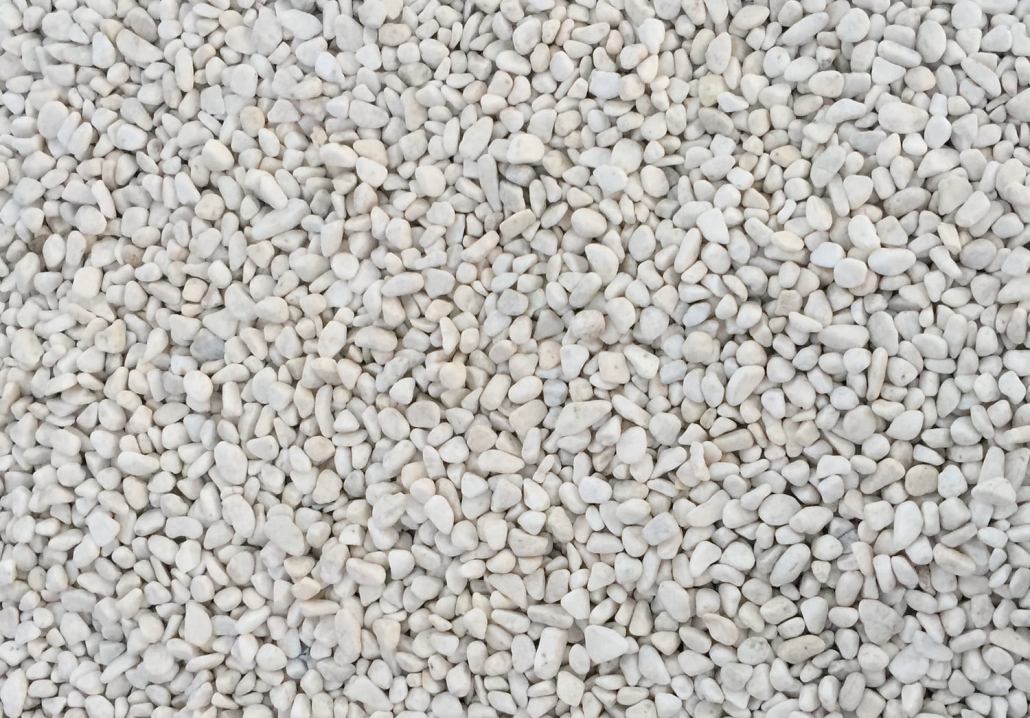
Which mulch you use on your trees will depend upon your tree’s needs. If you are wanting to prevent pests or weeds thriving in your soil and improve the aesthetics of your landscape, it’s best to use inorganic mulch. However, if you are wanting to retain moisture, add vital nutrients to the soil and aid in growth, it’s best to use organic mulch. This mulch also has the benefit of breaking down into the soil over time.
What are the benefits of using mulch?
Mulching offers numerous benefits to trees. A major advantage of mulch is that it helps to retain moisture in the soil, which is particularly important during hot and dry weather conditions. Mulch also suppresses weed growth, which can compete with your tree for important nutrients and water resources. Mulch enables your tree to receive a heavy boost of nutrients into the soil as it decomposes, which promotes healthy growth.
Mulch also insulates the soil, which protects the tree’s roots from extreme temperatures whether that is intense heat or cold. Many gardeners mulch in spring to help reduce the impact of frost in the winter months.
When should you mulch your trees?
The best time to mulch your trees is in the early spring or late autumn, but it also depends on why you are choosing to mulch your tree. To retain moisture and promote growth, then mulch your tree at the beginning of spring. If you are wanting to protect your tree from frost, then mulch just before the winter begins and the temperatures rapidly drop.
Step-by-step guide
The basics of applying mulch is relatively simple, however application can go a long way in how effective your mulch is. Follow our easy guide to learn the proper way to mulch your trees.
Gather your supplies
Before you start mulching your trees, you need to gather the necessary materials. You will need organic mulch, a shovel, a rake, and a wheelbarrow. The type of organic material you choose will depend on your preference and availability. For example, wood chips are a popular choice because they are easily available and long-lasting. Leaves, grass clippings, and straw are also good options. You may also want to wear gloves while handling the mulch, and as well as eye protection and a face mask or respirator if using particularly dusty organic materials.
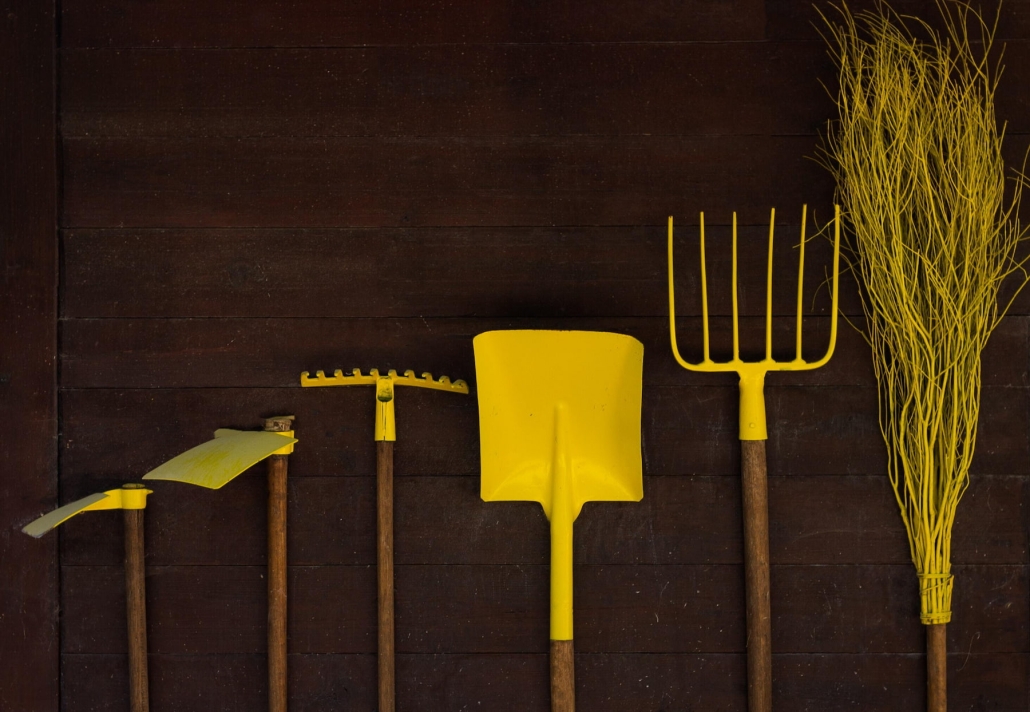
Prepare the ground
Now that you’ve gathered everything you need, it’s time to prepare the ground. Forgoing this step can mean your mulching is less effective as the soil will be covered by debris. Start by removing any weeds or grass around the tree base. Then, use a shovel to loosen the soil and remove any rocks, twigs, leaves or debris. Use a rake to level the soil around the tree.
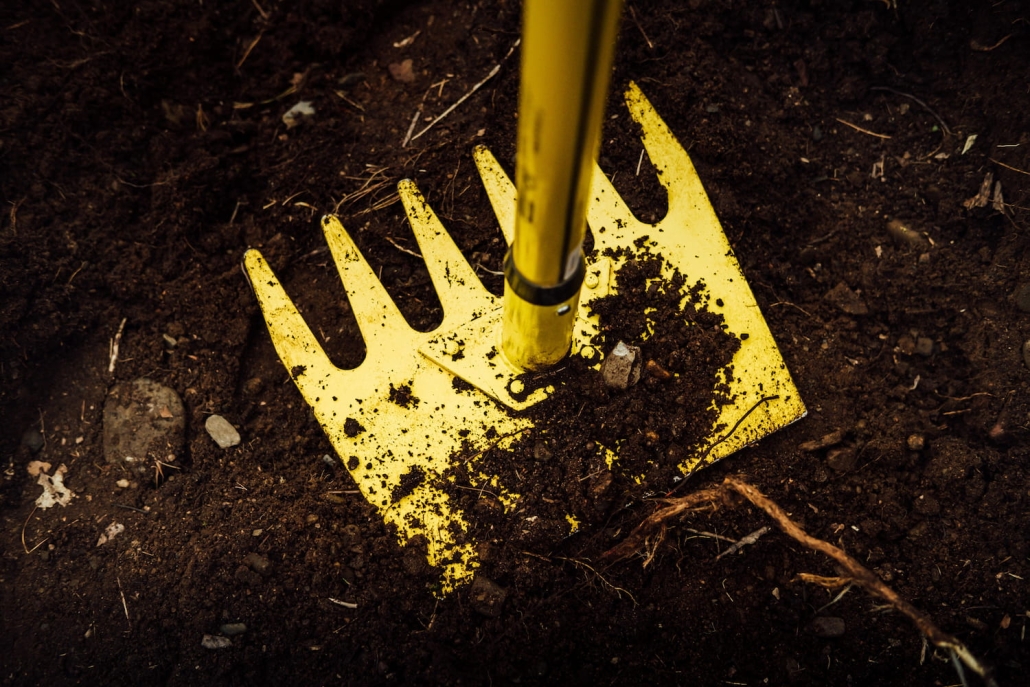
Edge around your tree
Edging the area around your tree will help the mulch stay in place and prevent it from washing away during heavy rain. To edge around trees, use a spade or edging tool to create a shallow trench in the soil around the outer tree area. The trench should be no more than 2-3 inches deep and 6-12 inches wide. This will give a clean, polished edge to the border of the tree. You can also cut into any surrounding grass to make a clean edge around the tree. Then, use a rake to smooth out the edges of the trench and create a gentle slope upwards towards the tree trunk. You can create a border around your tree with edging material such as stones, timber or plastic. Finally, fill the trench with mulch, making sure to cover the entire root zone.
Spread your mulch
When mulching your tree, you want your mulch to be at least 5-10cm deep – although this can depend on your mulch type. Ideally, the mulch should be deep enough to prevent weeds growing, but thin enough that water can still penetrate the soil. Your mulch should cover the area around your tree (roughly 1.5m). Use your rake to evenly spread the mulch.
Ensure to leave a space directly around the base of the tree. You don’t want to ‘volcano’ your mulch by piling it up against the trunk.
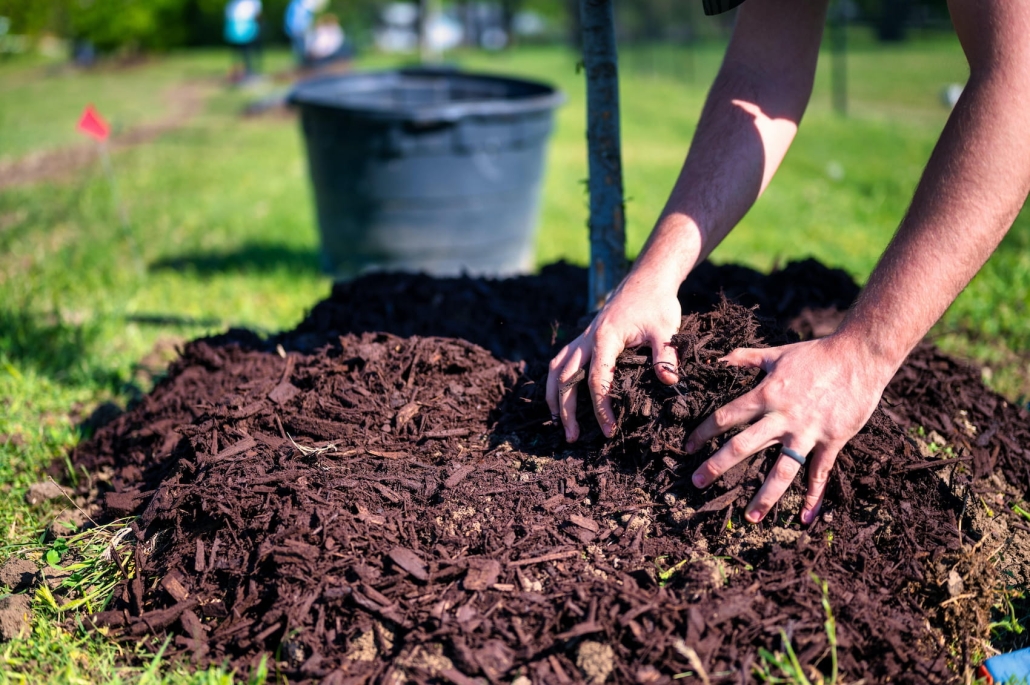
Maintain your mulch
Even after you’ve finished applying mulch, the job isn’t done! You’ll need to maintain your mulch so it continues to be effective and healthy for your tree. Pull out any weeds that are growing in your mulch. Over time or after heavy rainfall, your mulch may be compacted so you should rake it occasionally to ensure that the tree’s roots have adequate oxygen. It’s best to replenish your mulch every year to keep your tree healthy.
Trust the mulching experts
If you are finding that your mulching isn’t as effective as you’d like it to be or simply need some assistance with your tree maintenance, you can enlist the professional team at Jim’s Trees! Our mulching service provides your tree with the vital nutrients it needs and is tended by trained professionals.
Get in touch with us to receive a free quote on your mulching requirements today!
If you’ve recently had a dying or hazardous tree removed, you may be wondering if removing the remaining stump is really worth it. As stumps can take some significant effort and skill to successfully remove, most tree removal services won’t bother. But, leaving a stump in your garden can result in a range of issues from attracting pests to decreasing the value of your property.
So, is tree stump removal necessary? And what is the correct way to remove the stump? As highly experienced arborists, we break down why you should consider removing any tree stumps and the best way to approach it.
Why tree stump removal is necessary
While it’s tempting to leave your stump as is, there are multiple reasons why bothering to remove a tree stump is important.
Improve aesthetics and convenience
There’s no doubt that a tree stump can be an eyesore. It also can take up valuable garden space which could be used for new plants or other landscaping features. Aside from ruining the appearance of your property, a leftover stump can make garden maintenance a pain as mowing around a stump can be difficult.
Protect your other plants and trees
Even after you remove a tree, the roots of the tree stump can continue to grow and spread. These roots can divert precious resources, such as water and nutrients in the soil, away from your other healthy trees and plants. To ensure that your plants and trees receive adequate water and resources, it’s best to remove any remaining stumps.
Prevent damage to your property
Did you know that tree stumps can actually damage your home? If left alone, roots can rapidly spread underground, twisting around and damaging utility pipes to even cracking the foundations of your home. Often you don’t know how far the roots have spread until they begin causing damage and are incredibly difficult to remove. While root guards can help minimise the spread of the roots, it’s best to remove the stump entirely to prevent this problem.
Remove a tripping hazard
A tree stump can easily be tripped over, which is especially dangerous for young children and elderly people. If you have a tree stump on a commercial property, you could risk a costly lawsuit if someone trips and injures themselves. While painting the stump and other markings can help draw attention to it, the safest course of action is to simply remove the stump.
Stop the spread of disease and pests
Unwanted pests are known for making their home in tree stumps. Ants, termites, caterpillars and other wood-boring insects will be attracted to your leftover stump and can quickly spread to other trees and even to your home. The disease that killed your tree can live on in the stump and eventually may spread to your other healthy trees. Fungi thrives in tree stumps which can be hazardous to pets or young children. To avoid the spread of disease and pests, we recommend removing your stump.
How to remove a tree stump
While removing a tree is considered pretty straightforward, removing a stump is a little more difficult. There are multiple ways to remove a stump, you can use strong chemicals to kill the stump and roots (known as stump poisoning), dig the stump and roots out of the ground, or stump grinding which cuts up the stump into reusable wood chips.
Stump poisoning
If you are looking for an affordable, low disturbance, and easy way to remove a stump, stump poisoning is the way to go. While you can do it yourself, it’s best to use a professional service as you will be dealing with highly hazardous chemicals and want to ensure you get the job done properly. Stump poisoning tends to be slower acting and you may still need to dig the stump out entirely.
Stump removal
Stump removal involves removing a stump and roots from the soil by digging them out. This can take some serious physical exertion as you will need to dig deep enough to reach the roots, cut the roots and remove them manually. You will also need to cut the stump and remove it out of the ground. Using a chainsaw to remove the roots can be highly dangerous, especially if you don’t have the proper training so we recommend enlisting the experts to handle this complex task. Following the stump removal, you may be left with quite a mess so you will need to clean up and dispose of the stump matter.
Stump grinding
Stump grinding is a highly efficient and effective method of stump removal. The stump grinder will cut through your stump and roots turning them into reusable wood chips which you can then use on the rest of your garden. Stump grinding saves you the hassle of cutting and digging the roots and stump out yourself making it a popular option. Grinding can be a little tough in tight spaces and can be highly disruptive for a period of time.
Remove your tree stump today!
If you are looking to remove a stump affordably and efficiently, then you can count on Jim’s Trees! As professional arborists, we’ll be able to ensure that your stump is successfully removed whether it’s by grinding, removal or poisoning. After the removal, we will leave your garden in tip top shape so you enjoy your beautiful property. Contact us or fill out this form to receive a free quote today!
Ever seen a tree fashioning a cool belt? It’s more than just a snazzy accessory, tree banding is a great way to prevent possum damage to your trees. But what is tree banding? And is it really necessary in order to protect your tree from pesky possums? The knowledgeable team at Jim’s Trees breaks down the technique for tree banding and why it can be effective in the struggle against possums. Read more
While a little rain never hurts anyone, a large amount of rain in a short amount of time can create a range of problems for your garden and especially your trees. If you’ve recently received a significant downpour and are now dealing with flooding, your trees will also likely need attention.
If you are landscaping around your home, you may be wondering how close you should plant your trees to your house. Planting trees in your garden adds gorgeous colour, shape and texture, as well as some more practical benefits including added privacy, shade and natural cooling. But if you plant a little too close to your home, you may find that your trees can quickly become a nuisance.
As professional arborists, we are no strangers to all things tree related. In the following article, we break down why choosing where to plant your tree matters, how far you should plant and what to do if you’ve planted too close to your home. Read more

